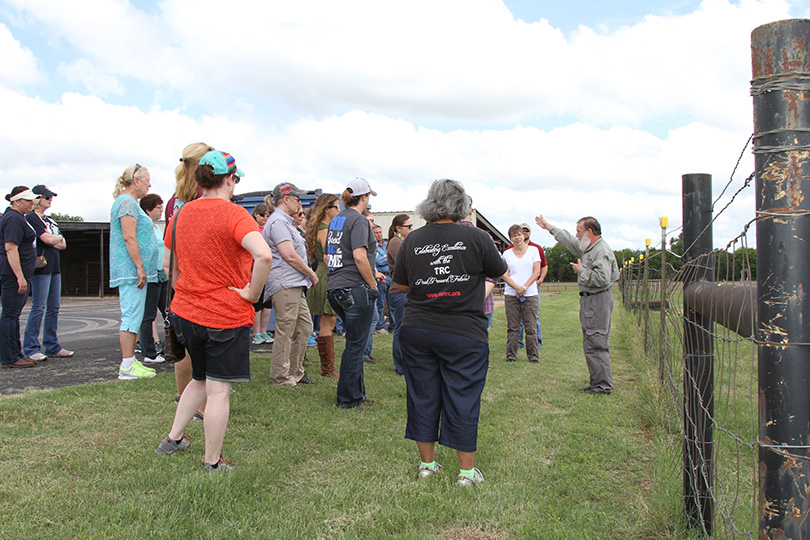By Shala Watson
Multimedia Writer
School is out for the summer. But not for some teachers across the Lone Star State.
More than two dozen teachers attended Texas Farm Bureau’s (TFB) Summer Agricultural Institute (SAI) to get a firsthand look at agriculture.
The four-day professional development seminar was held in Waco June 5-8.
For more than 20 years, the seminar has equipped teachers with tools and resources to help bring agriculture to life in their classrooms.
Many students are several generations removed from the farm and ranch.
The SAI program helps teachers learn how to dispel common myths and incorporate agriculture into their curriculum.
“The main issue that agriculture faces today is that people just don’t know enough about agriculture anymore,” Jett Mason, TFB director of Educational Outreach, said. “One of the biggest missions we have is to increase agricultural literacy and teach people about agriculture.”
Teachers studied entomology and learned more about chicks in the classroom. The group also observed many diverse types of agricultural operations during the program including a stop at Urban Produce, a local hydroponic lettuce farm.
“Teachers come here to gain exposure to all areas of agriculture—whether it be dairy production, animal production, plant production or research and development and everything in between,” Mason said.
Participating teachers from all subjects and grade levels explored soil and plant science during a stop at Livengood Farms, LLC, a fresh cut flower farm. They also created their own floral arrangements.
They developed new connections with farmers, ranchers and industry professionals during field trips to Bentwood Dairy, a farm equipment dealership and McLennan Community College (MCC).
“I had been to a dairy before but I didn’t know all the different processes of all the different crops that are grown and managed on a dairy,” Susan Varner, third grade teacher at Grandview Elementary, said. “At MCC, I learned a lot about just stewardship of the earth. I think it was like going to a college class myself—a refresher course.”
Varner is from a rural community and has incorporated hands-on activities in her classroom, including a garden where her students grew carrots, lettuce and potatoes in raised beds. She plans to expand her agricultural lesson plans when she returns to the classroom. She wants her students to understand the value of agriculture in every facet of their lives.
“If they understand the source of all their food and all their clothing and everything about the agricultural system, then I just think they will be better citizens and maybe better stewards of the land,” Varner said.
The program provided teachers with several team building opportunities. During their visit to Texas State Technical College’s (TSTC) Challenger Learning Center, they learned more about the agricultural components of the space program during an interactive mock mission aboard the International Space Station.
They learned more about International Space Station Agricultural Camera (ISSAC), which takes frequent infrared and visible-light images of the Great Plains. Farmers and ranchers are able to use these images to make management decisions such as irrigation planning, fertilizer and pesticide applications.
“The ISSAC system actually provides farmers with data and field maps and topography, and field moisture statistics and everything like that,” Mason said. “It provides more up to date information more often for farmers.”
Judy Caldwell, first grade teacher at T.E. Baxter Elementary in Midlothian, said as the landscape of Texas becomes more and more urban, it’s important to keep students engaged and connected with agriculture.
“Midlothian is a rural area that has become urban,” Caldwell said. “When you look in your classroom, you have a group of kids who are totally really urban kids and then you have this small pocket of kids who still have that rural influence. So this really gives us a chance to really keep agriculture in the front of their minds.”
When she returns to the classroom, Caldwell plans to incorporate resources from the Texas Wildlife Association into her curriculum, as well as other ideas from the program. She also wants to find new way to get parents involved in agricultural activities in the

